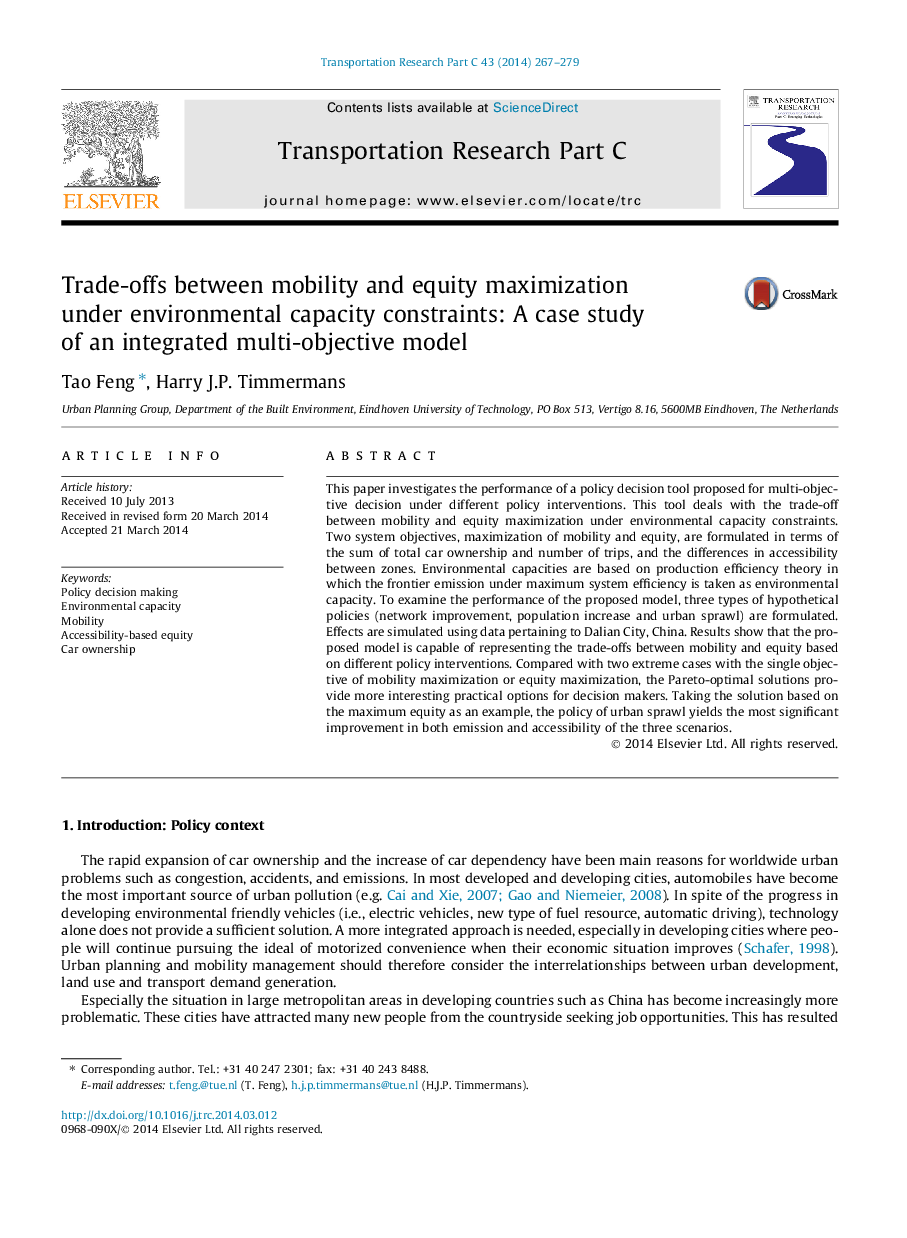| Article ID | Journal | Published Year | Pages | File Type |
|---|---|---|---|---|
| 525022 | Transportation Research Part C: Emerging Technologies | 2014 | 13 Pages |
•We proposed a multi-objective policy decision tool under environmental constraints.•We evaluated the trade-offs between transportation mobility and equity.•We investigated different policy interventions.•We verified the applicability of the tool in assisting policy decision making.•We showed that output can provide a broad space for policy decision making.
This paper investigates the performance of a policy decision tool proposed for multi-objective decision under different policy interventions. This tool deals with the trade-off between mobility and equity maximization under environmental capacity constraints. Two system objectives, maximization of mobility and equity, are formulated in terms of the sum of total car ownership and number of trips, and the differences in accessibility between zones. Environmental capacities are based on production efficiency theory in which the frontier emission under maximum system efficiency is taken as environmental capacity. To examine the performance of the proposed model, three types of hypothetical policies (network improvement, population increase and urban sprawl) are formulated. Effects are simulated using data pertaining to Dalian City, China. Results show that the proposed model is capable of representing the trade-offs between mobility and equity based on different policy interventions. Compared with two extreme cases with the single objective of mobility maximization or equity maximization, the Pareto-optimal solutions provide more interesting practical options for decision makers. Taking the solution based on the maximum equity as an example, the policy of urban sprawl yields the most significant improvement in both emission and accessibility of the three scenarios.
